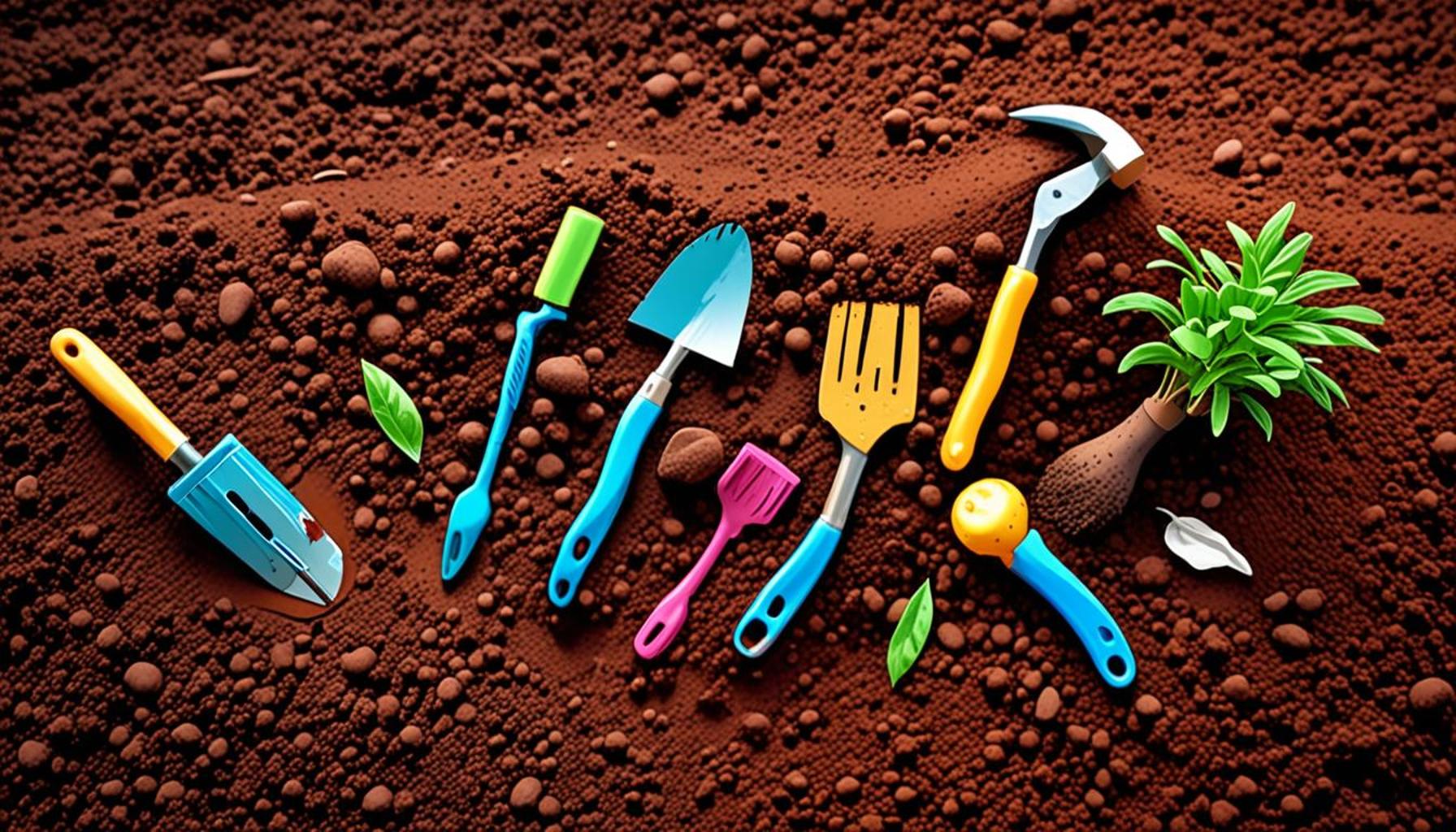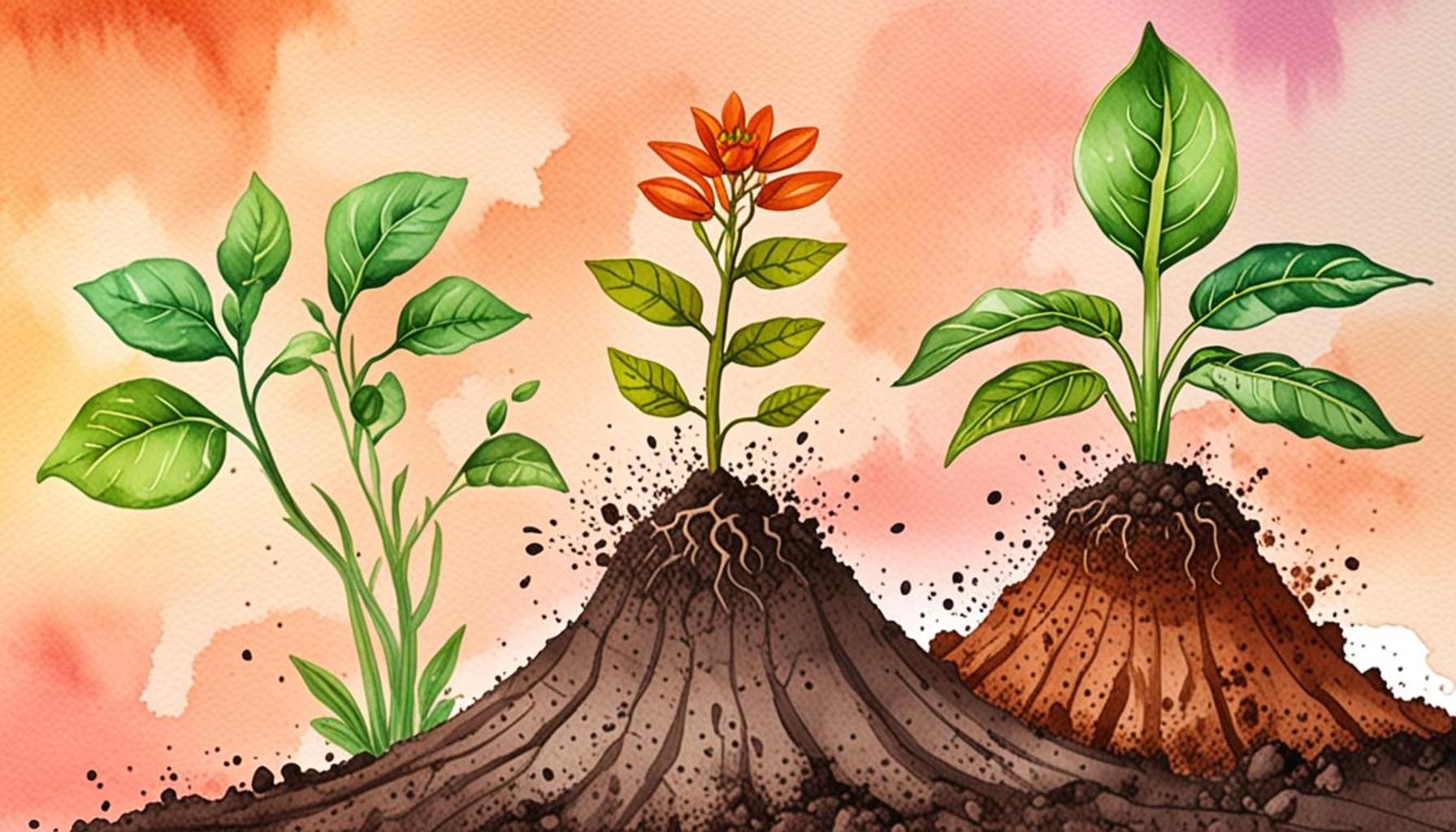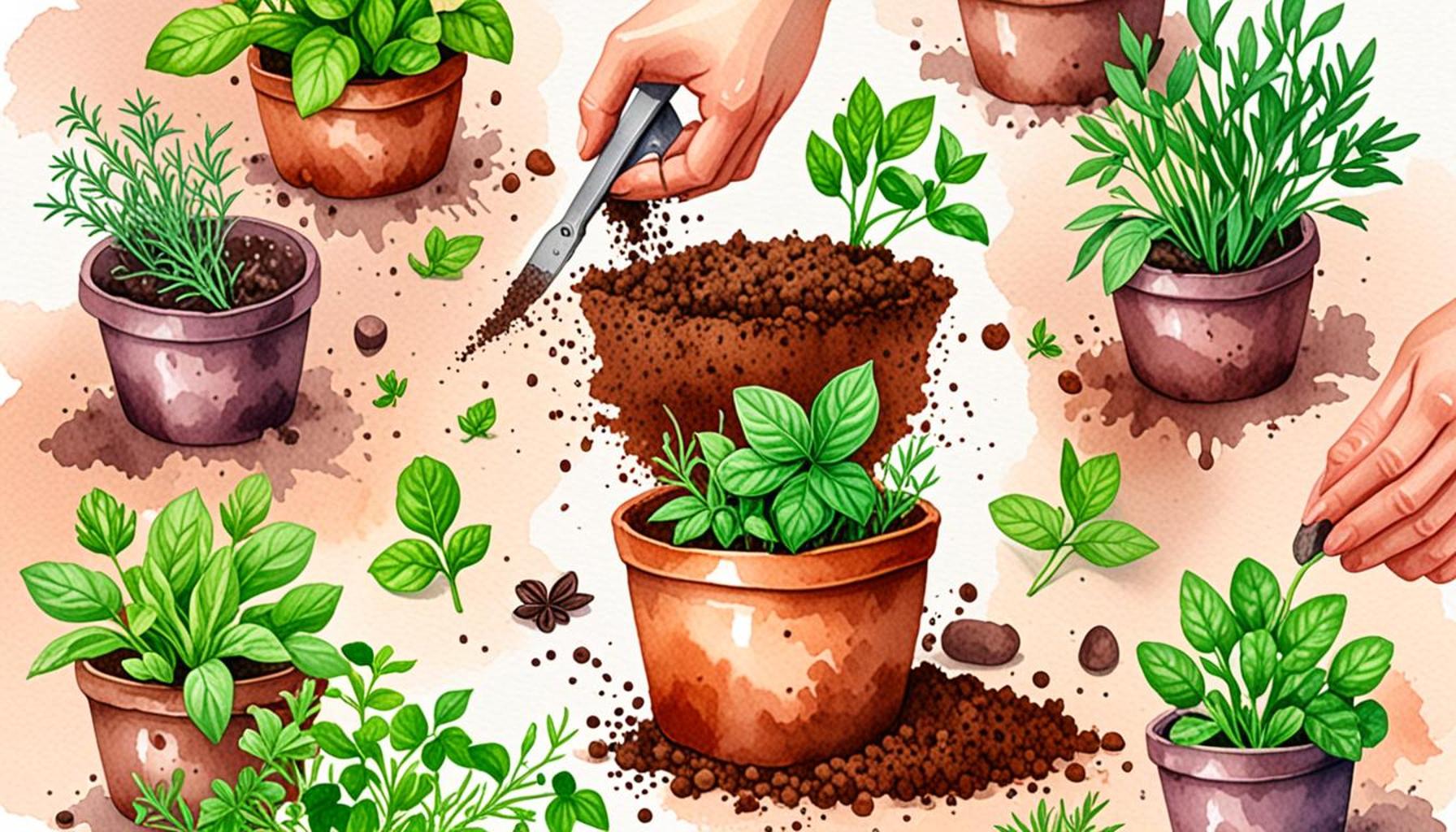How to Choose the Right Tool to Prepare Your Soil

Importance of Tool Selection in Soil Preparation
In the realm of gardening and agriculture, selecting the appropriate tools for soil preparation is paramount. The right choice can significantly impact the growth and productivity of your plants, whether you are a veteran farmer managing expansive fields or a novice aiming to cultivate a small backyard garden. With a plethora of tools available in the market, understanding their functions and advantages can empower you to make well-informed decisions.
Understanding Soil Types
One of the first considerations in tool selection is the type of soil you will be working with. Different soil compositions present unique challenges. For instance, clay soils are dense and retain moisture, often requiring heavy-duty spades and trenching shovels to effectively break them apart. In stark contrast, sandy soils, which drain quickly and lack essential nutrients, can benefit from the use of rakes to mix in organic matter and improve soil structure.
Common Tools for Soil Preparation
Among the many tools at your disposal, some are more critical than others. Commonly used options include:
- Shovels: Essential for digging and moving soil.
- Tillers: Perfect for breaking up large soil areas and incorporating compost.
- Hoes: Ideal for creating furrows and weeding.
- Forks: Useful for breaking apart clumps and aerating the soil.
- Rakes: Necessary for leveling and smoothing surfaces.
Assessing Soil Condition
The condition of your soil is another crucial factor in determining the right tools for your project. If your soil is compacted, using aeration devices like spike aerators or core aerators can improve water infiltration and root growth. Conversely, if your soil is already loose, a leveling tool could be sufficient to prepare your planting area. Each decision directly correlates with the health and productivity of your plants.
Project Scope Matters
Additionally, consider the scope of your gardening or agricultural project. Are you prepping a modest garden bed or undertaking the cultivation of expansive agricultural fields? The scale of your project will heavily influence your choice between manual tools or investing in powered equipment, such as rototillers or garden tractors, that can save time and labor.
Maximizing Productivity
By carefully evaluating these factors, you can pinpoint the tools best suited to your specific soil preparation requirements. This knowledge not only enhances the overall health of your garden or crop but also boosts long-term productivity and sustainability. Ready to dig deeper into the world of soil preparation tools? Understanding these nuances will help you cultivate a thriving and vibrant landscape right in your backyard or on your farm!
DISCOVER MORE: Click here to learn about mulching techniques
Choosing the Right Tools for Effective Soil Preparation
When it comes to preparing your soil, the right tools can make all the difference. Understanding the various functions of each tool, as well as the nature of your gardening space, will set you on the path to success. As you delve into the wide array of options available, you’ll find the key is to match your tools with the specific needs of your garden or farm.
The Importance of Soil Testing
Before investing in tools, it’s imperative to assess your soil through testing. Soil tests can reveal essential information about pH levels, nutrient content, and organic matter. Several local agricultural extension services across the United States offer soil testing kits or services. Once you have a clearer picture of your soil’s composition, it will guide you in selecting the most effective tools for preparation. For instance, a soil with a high clay content may call for different implements than sandy soils that drain quickly.
Evaluating Tool Features
In addition to understanding your soil type, you’ll want to take the features of individual tools into consideration. Some factors to assess include:
- Size and Weight: Ensure tools are manageable. Lightweight tools are ideal for smaller gardens, while larger, heavier tools may be needed for extensive plots.
- Handle Type: Ergonomic handles can reduce strain during prolonged usage, making them a worthy investment.
- Material: Stainless steel tools offer durability against rust and wear, while wooden handles can be comfortable but may require more maintenance.
Manual vs. Powered Tools
Another critical decision involves the choice between manual and powered tools. For small plots, hand tools like hoes and rakes may suffice. Remember, manual tools allow for greater control, particularly when working around delicate plant roots. In contrast, if you’re tackling larger fields, powered tools such as garden tillers or tractors can significantly reduce the time and labor required for soil preparation. Take into account your budget, energy, and time when making this decision.
Combining Tools for Maximum Effectiveness
Don’t shy away from combining different tools to create a comprehensive soil preparation strategy. For example, starting with a tiller to break up the soil, followed by a rake to smooth the surface, can lead to the best results. Many gardeners find success by layering their approach—using a shovel for heavy lifting, a fork for aeration, and a rake for the final touches. This synergistic method ensures your soil is well-prepared for planting.
By thoughtfully considering these aspects, you’ll not only enhance the health of your soil but also facilitate a thriving garden or agricultural venture. Choosing the right tools to prepare your soil may appear daunting at first, yet with the right information and understanding, it can lead to fruitful and rewarding gardening experiences.
Understanding Soil Types
Before diving into the tools available for soil preparation, it’s essential to understand the various types of soil you may encounter. Soil can broadly be classified into five categories: sandy, clay, silty, peaty, and chalky. Each type has unique properties, which impact the effectiveness of particular tools.
Sandy Soil
Sandy soil drains quickly and has larger particles, which means it often requires specific tools like a tiller or cultivator to mix in organic matter effectively.
Clay Soil
Clay soils are dense and compact, making them challenging to work with. Tools such as spades and shovels are crucial for breaking up this tough soil. Adding the right amendments can improve drainage and texture.
Essential Tools for Soil Preparation
When selecting soil preparation tools, consider factors such as the size of your garden, the immediate soil condition, and the specific tasks you aim to accomplish. Here’s a brief overview:
| Tool Type | Functionality and Benefits |
|---|---|
| Rotary Tiller | Breaks up soil quickly and incorporates organic matter for better soil health. |
| Hand Trowel | Perfect for small-scale digging and transplanting in confined spaces. |
| Garden Fork | Excellent for aerating soil and mixing in amendments. |
| Rake | Helps to level the soil surface and remove debris. |
| Compost Spreader | Ensures even distribution of organic material for enhancing soil quality and fertility. |
By understanding your soil type and selecting appropriate tools, you can set the stage for a thriving garden or agricultural space. The right equipment can drastically reduce the effort required while maximizing results.
Tips for Selecting the Right Tools:
- Assess the size of your plot and choose tools accordingly.
- Opt for ergonomic designs to reduce strain during use.
- Research tools that cater to your specific soil challenges.
As you continue exploring soil preparation methods, keep in mind that each step you take contributes to a healthier garden ecosystem.
DISCOVER MORE: Click here to learn about effective harvesting techniques
Optimizing Your Soil Preparation with the Right Tools
Once you’ve established a solid understanding of your soil and the tools available, the next step involves optimizing your workflow for maximum soil preparation effectiveness. Different tasks call for varied tools, and knowing when to deploy each one can result in healthier soil and more productive plants.
The Role of Soil Amendments
Before diving into tool selection, consider the importance of soil amendments. These are materials added to the soil to improve its physical or chemical properties, enhancing fertility and structure. Common amendments such as compost, manure, and peat moss can benefit from specific tools for application. A spreader can be useful for evenly distributing amendments over larger areas, while hand trowels provide precision for smaller, targeted applications. Understanding your amendment’s texture and density will help you select the right tool to incorporate it effectively into your soil.
Understanding Seasonal Needs
The timing of your gardening activities also plays a crucial role in tool selection. For instance, early spring is the ideal time for tilling and aerating soil to prepare for planting, while fall may call for tools to help with cover cropping and re-enriching the soil. Tools like garden forks and hand cultivators work wonderfully in the top layers of the soil to mix in organic material and improve composition during these transitions. Keeping a seasonal tool checklist organized can ensure that you have what you need throughout the year.
Factors Influencing Tool Durability
When choosing gardening tools, durability is paramount. In a climate like most parts of the United States, tools may face challenges such as varying moisture levels and temperature fluctuations. If you live in a region with a distinct rainy season, consider tools with corrosion-resistant materials, such as those made from powder-coated steel or high-grade plastic. A well-cared-for tool can last for years, so investing in high-quality options suited to your climate can save you money and enhance your gardening experience.
Engaging with Local Gardening Communities
One of the best ways to navigate the process of selecting soil preparation tools is by engaging with local gardening communities or extension programs. These groups often share experiences, tool recommendations, and even tool swaps, allowing you to test out different implements before making a purchase. Your local agricultural extension office can provide insights specific to your region’s soil type and climate challenges, giving you an informed perspective on the best tools for your needs.
Staying Informed About Innovations
The world of gardening tools is constantly evolving, with new technologies enhancing the ways we can prepare soil. For example, soil steamers are gaining popularity for pest control and soil sterilization before planting. Staying informed about the latest trends and innovations can help you discover new tools that streamline soil preparation processes, making for a more efficient gardening experience. Investing time in research, either online or through gardening publications, will keep your approaches fresh and effective.
By considering these factors and taking an informed approach, you can ensure that the tools you choose will enhance not only soil preparation but the overall health and productivity of your garden. Remember, the right tool is not just about efficiency; it’s also about fostering a sustainable and thriving growing environment.
DIVE DEEPER: Click here to discover more about soil health
Conclusion: Empowering Your Gardening Journey with the Right Tools
Choosing the right tools to prepare your soil is a critical step in cultivating a thriving garden. With a firm understanding of your soil composition, seasonality, and available tools, you can create a tailored strategy that maximizes soil health and plant productivity. Remember, soil amendments play a significant role; selecting the right tool for their application can greatly enhance their benefits. Additionally, being mindful of the tools’ durability, especially in various climate conditions across the United States, ensures a worthwhile investment in your gardening toolkit.
Connecting with local gardening communities can also enrich your understanding, offering valuable insights and recommendations that cater to your specific region and gardening needs. Furthermore, staying updated on innovations in gardening tools opens the door to new practices that can simplify your soil preparation process. Innovations like soil steamers and advanced tillers can streamline your efforts and potentially lead to better crop yields.
Ultimately, the right tools do more than just make the job easier; they cultivate a healthy ecosystem in your garden. By carefully assessing your unique gardening situation and leveraging tools designed for optimal soil preparation, you will not only improve your soil’s structure and fertility but also enjoy the fruits of your labor in the form of lush, vibrant plants. As you embark on your gardening journey, let informed tool selection be the key to unlocking the full potential of your growing space.


